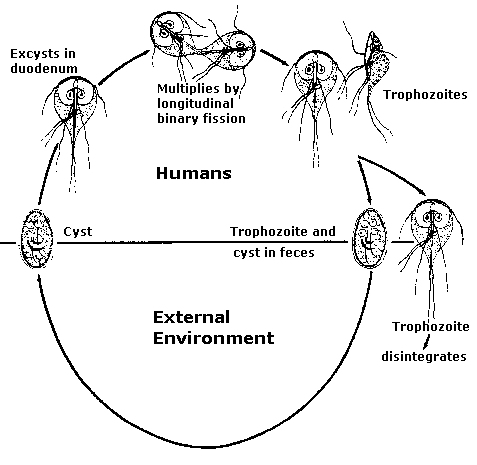- "Infection occurs by the
ingestion of cysts in contaminated water or
food.
- In the small intestine,
excystation releases trophozoites that multiply
by longitudinal binary fission.
- The trophozoites remain in the
lumen of the proximal small bowel where they can
be free or attached to the mucosa by a ventral
sucking disk.
- Encystation occurs when the
parasites transit toward the colon, and cysts are
the stage found in normal (non diarrheal)
feces.
 The cysts are hardy, can survive
several months in cold water, and are responsible
for transmission. The cysts are hardy, can survive
several months in cold water, and are responsible
for transmission.  Because the cysts are
infectious when passed in the stool or shortly
afterward, person-to-person transmission is
possible. Because the cysts are
infectious when passed in the stool or shortly
afterward, person-to-person transmission is
possible. - While animals are infected with Giardia,
their importance as a reservoir is unclear."
- courtesy of the Division of
Parasitic Diseases at the National Center for
Infectious Diseases, Centers for Disease Control
& Prevention
- http://www.dpd.cdc.gov/DPDx/HTML/Giardiasis.htm
|
